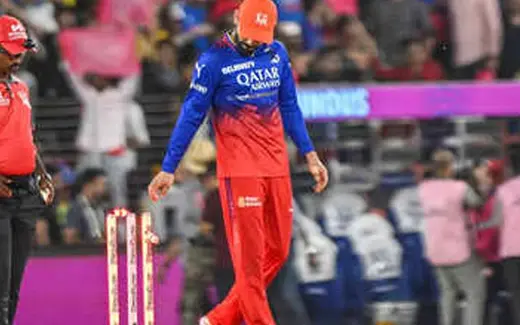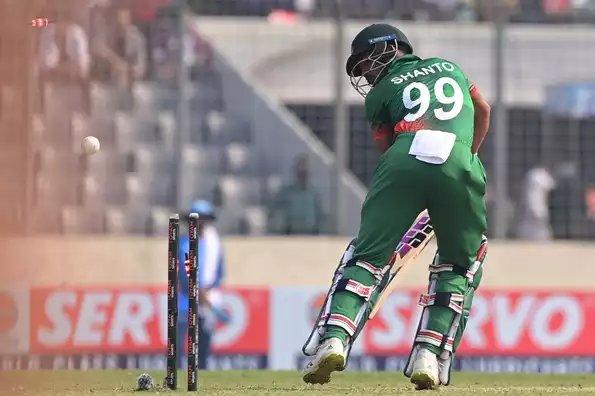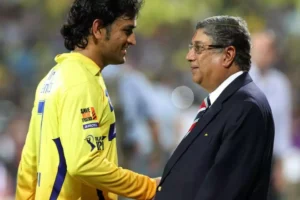“Flamboyant.” When asked to sum up Abhishek Sharma as a cricketer and a person, Mandeep Singh of Punjab says it’s the first word that comes to mind. He remarks, “That’s his flair,” in a conversation with Cricbuzz. “You see the flamboyance when he is batting and even when he is off the field, you can see that with his nature and his style.”
The hallmark of Abhishek’s budding cricket career has been flamboyance. This trait was clearly displayed in his first IPL encounter in 2018, as he stunned everyone with an incredible 19-ball 46 against RCB. And he further demonstrated it in the historic match between SRH and MI earlier in the IPL season, surpassing players like Travis Head and Heinrich Klaasen with a stunning 16-ball fifty.
However, Mandeep has also seen that Abhishek is focusing on a new element of his game: consistency. Although they have played together since the 23-year-old’s rookie campaign in 2017, the Punjab captain emphasizes that he has changed significantly in the last several years. He has practically doubled his impact on the game by fusing his natural flare with a newfound dependability that was lacking in the beginning of his career.
“Abhishek and Shubman [Gill] both entered the team around the same time, having scored plenty of runs in junior cricket,” Mandeep relates. “It was common knowledge that two exceptional players would be joining, and both of them made the Ranji Trophy squad at a young age. Shubman’s development has undoubtedly been remarkable; he now plays for India. However, Abhishek struggled with being consistent. Although he wasn’t scoring many runs, he had exceptional talent.
“Navdeep Saini was bowling during a match versus Delhi, and the batsmen arrived late to bat the ball. In contrast, Abhishek was unaffected by pace when he was batting. He was playing flick shots, pulling with ease, and throwing back-foot punches. That’s when I realized that he has an infinite amount of time, much like Shubman.”
Along with Riyan Parag, Gill and Abhishek were part of the 2018 India team that won the Under-19 World Cup. While Gill has quickly become well-known, Abhishek and Parag have had a more gradual rise, beginning their IPL careers with promise and then needing some time to mature.
Parag had pretended to be dishonest; his best return in the 2022 season was 180 runs at an average of 16.22. His IPL career has produced 600 runs at an average of 16.21 before this season. The Rajasthan Royals still had faith in him in spite of this. In contrast, Abhishek, who spent 2018 with Delhi before joining Sunrisers Hyderabad in 2019, displayed better form in the 2022 season, amassing 426 runs at an average of 30.42. His total of 893 runs at an average of 22.89 prior to IPL 2024, however, did not accurately represent his ability.
In the IPL 2024, both players appear to have changed drastically as a result of their outstanding performance in the domestic season. With seven half-centuries in ten matches and 510 runs for Assam at an excellent strike rate of 182.79, Parag finished as the 2023 Syed Mushtaq Ali Trophy’s leading run scorer. In the same competition, Abhishek put up a similarly impressive performance, scoring 485 runs at a strike rate of 192.46. In ten matches, he scored two century and three half-centuries, helping Punjab to their first-ever victory.
“The form he showed (in the match against MI), he got this from Mushtaq Ali,” Mandeep claims. “He used to play like this, totally dominating, while we were playing league games in Ranchi. The best thing was that he was hitting long balls—100s, 70s, and 80s. He wasn’t consistent, but earlier he used to obtain an occasional fifty. However, he has often scored significant runs this year.
“So, he has maintained that form in the IPL and has also created a few exceptional shots. He used to hit sixes off of the spinners when he batted against them, playing the ball at a hard length where you can’t play the pull or get onto the front foot. In his game against Piyush Chawla, he was similar. He is acting in the same manner as in Mushtaq Ali. He doesn’t struggle with pace or spin in relation to time.”
Aavishkar Salvi, the head coach of Punjab, agrees, highlighting the psychological component as well. “You cannot guarantee a performance but at least you can guarantee a mindset and approach,” he argues. “The season is no longer two or three months long; it is now 365 days long. Throughout the year, the players participate in numerous tournaments. Thus, maintaining form throughout the season might be challenging at times, but these guys’ preparations, thinking, and approach are some of the key elements that motivate them to score runs whenever they get the chance.”
***
Abhishek was deep in concentration during a strong net practice on the eve of what would prove to be a batting spectacle in Hyderabad. He made a brilliant choice of shots, and the timing seemed perfect. However, there were times when it seemed like he was straining to finish the quick deliveries. Then he performed a draw shot to the hilt, controlling the bounce and finishing it with strength. Raj Kumar Sharma, his father and boyhood coach, stood behind the nets watching his son bat and writing detailed notes, and he gave this specific stroke great marks.
Sharma senior, who represented Punjab at the age group levels in cricket, saw Abhishek’s natural talent and enthusiasm for the game right away. When Abhishek was six years old, he looked forward to his father coming home from cricket so he could practice hitting, rolling his arm over, and holding on to a few catches. He began using the leather ball for play when he was eight years old. Raj Kumar claimed that his son had an innate talent for the game, demonstrated a straight bat technique, picked up the grip on his own, and was proficient in correct cricket shots even without much guidance from his father.
This demonstrates yet another area of similarity between Abhishek and his previous India U19 colleagues. The contribution of Lakhwinder Singh Gill was essential to his son Shubman’s ascent to prominence. In a similar vein, Riyan Das’s career has been influenced by his father, Parag Das, an Assamese cricketer who played in the first class.
“I’ve spoken with Shubman Gill’s father numerous times. The role of a father is crucial, according to Raj Kumar. It is really beneficial for the gamer if their father has played and comprehends the game. because the parent is aware of the child’s priorities. I’ve watched Sarfaraz Khan ascend on the Indian stage. I’ve given his father a couple listens. He offers great counsel, is very knowledgeable, and offers direction.
“Shubman Gill has been Abhishek’s friend since they were young children; they have grown up together since then.” Shubman’s father has also had a significant influence. He used to stay with him, teach him everything, and make him bat. I used to listen to everything when I sat there. He is an immense reservoir of cricketing expertise. He mentored all of Shubman’s pals who came to him in addition to training him.”
Gill and several other Punjabi players, including Abhishek, have benefited much from Yuvraj Singh’s mentoring. During the off-season, Abhishek in particular has trained extensively with Yuvraj, greatly benefiting from the experience and knowledge of one of India’s cricketing greats.
Raj Kumar says about Yuvraj Singh, “He idolised him when he was a kid.” “He never moved from the television when he used to watch all of his matches. He used to tell his father, “Papa, I want to be a player like him,” after seeing him bat. “Alright, son, you work hard, practice well, and you’ll also become a good batter,” was something I used to say. After making it to the first class, he met Yuvraj Singh, who had watched him play. I thank God that he has someone like Yuvraj Singh to guide and assist him. He was working out with Yuvraj Singh up until recently, who handled every aspect of his training regimen.”
The impact has also been felt by Abhishek’s domestic colleagues. “Speaking about evolution, the consistency has come in his batting in the last couple of years, he has started scoring a lot of runs, and I feel Yuvi paaji has a big role in that,” Mandeep continues. “He continues to collaborate with him directly. Shubman, Abhishek, Prabhsimran, and Anmolpreet trained with him for two to three months before to the occurrence of COVID-19. He is still mentored and close to Yuvi paaji. In front of us, he would also chastise him, asking, “Why did you play this shot?” You played that in the air, but why? similar things. As a result, he has been involved in a significant way, has spent a lot of time with him, and remains in contact with him.”
Another mentor to Abhishek has been former SRH coach Brian Lara, who, according to Raj Kumar, still makes phone calls to give advice. Given this robust support system, it is hardly surprising that advancements have become so apparent lately.
Despite all of the advancements, Mandeep has some suggestions for the inexperienced hitter. He says about Abhishek, “The word flamboyant best describes him and he should never leave that.” “He should play like this and remain like this; that’s when he’s at his best.”







